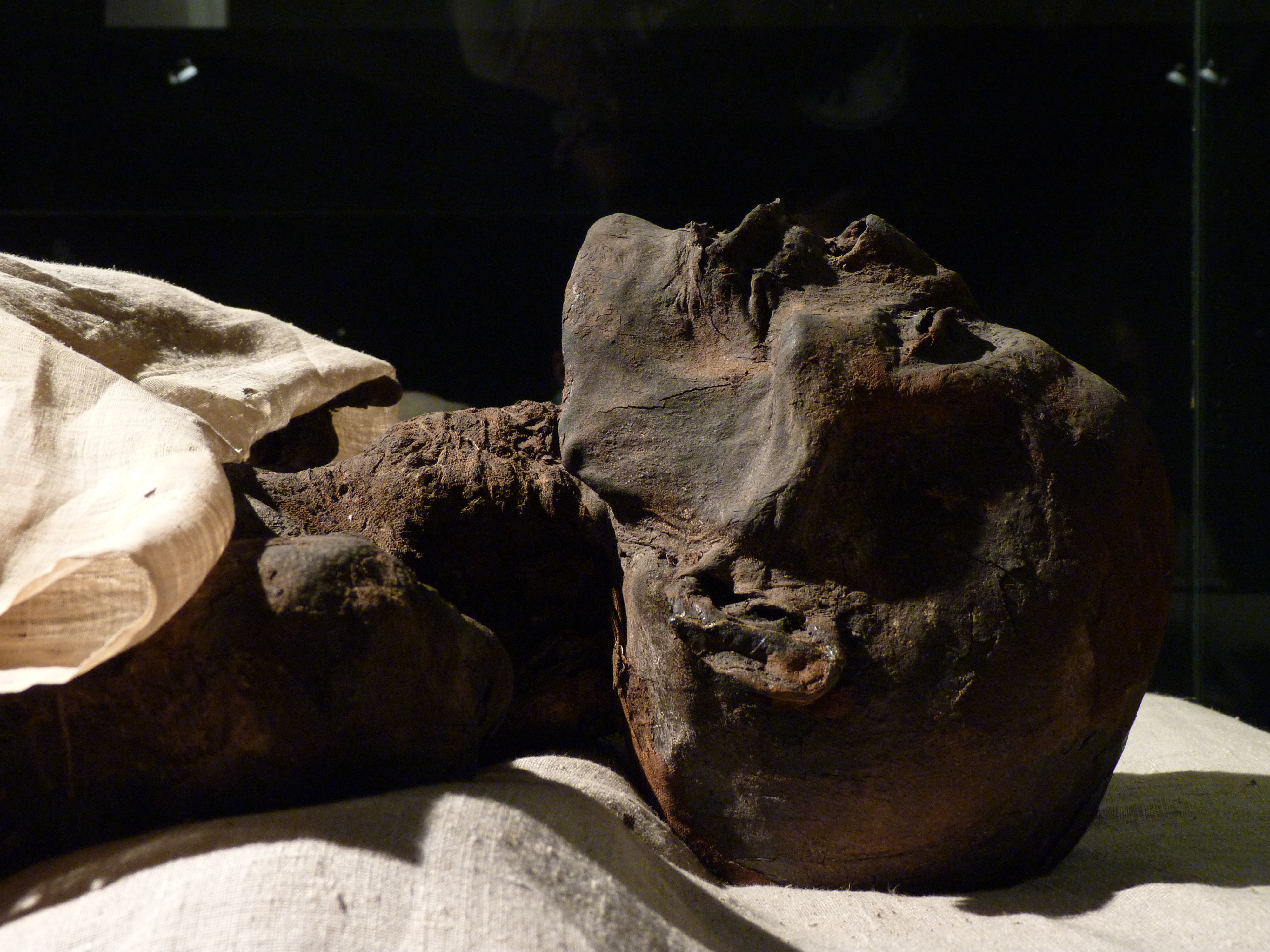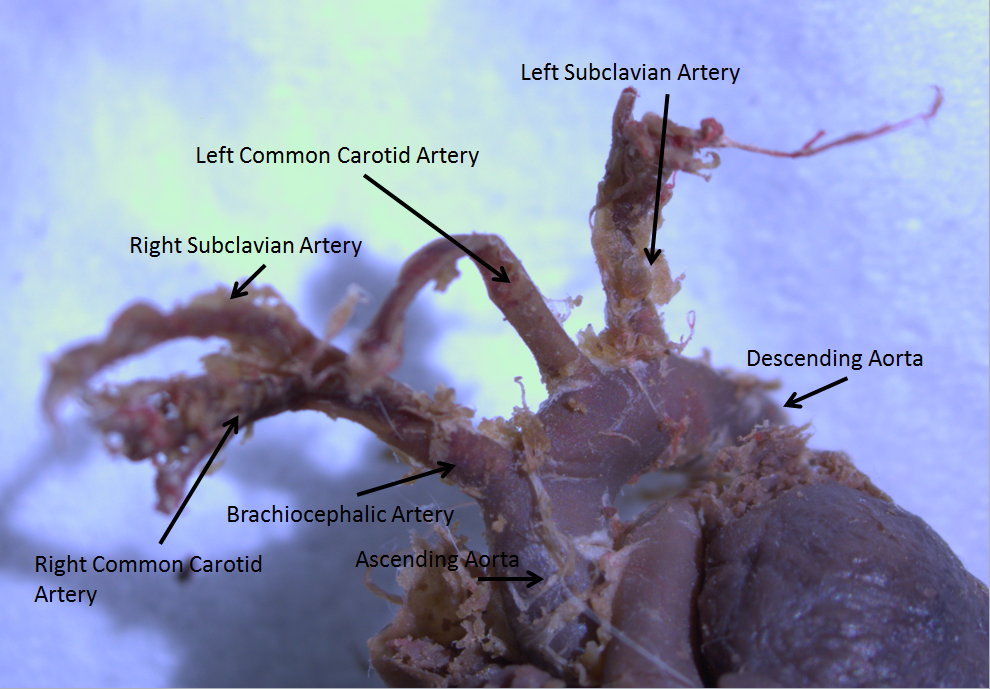|
Lady Rai
Lady Rai (c. 1570/1560 – 1530 BC) was an ancient Egyptian woman of the early 18th Dynasty who served as nursemaid to Queen Ahmose-Nefertari (1562–1495 BC). Her mummified remains were discovered in a Theban tomb in 1881 and it is estimated that she was about 30 – 40 years old when she died around 1530 BC. The mummy was unwrapped by Grafton Elliot Smith in 1909. He distinguished her mummy as "the most perfect example of embalming that has come down to us from the time of the early 18th Dynasty, or perhaps even of any period." He further characterized her as "the least unlovely" of the existing female mummies, and described as a "slim, gracefully-built woman," measuring in height, with small "childlike" hands. In 2009, a CAT scan by a medical team revealed Lady Rai had a diseased aortic arch and is thus the oldest known mummy with evidence of atherosclerosis. The mummy of Ahmose Inhapy, a princess and queen of the late 17th dynasty of Egypt The Seventeenth Dynasty of ... [...More Info...] [...Related Items...] OR: [Wikipedia] [Google] [Baidu] |
Mummy LadyRai Smith
A mummy is a dead human or an animal whose soft tissues and organs have been preserved by either intentional or accidental exposure to chemicals, extreme cold, very low humidity, or lack of air, so that the recovered body does not decay further if kept in cool and dry conditions. Some authorities restrict the use of the term to bodies deliberately embalmed with chemicals, but the use of the word to cover accidentally desiccated bodies goes back to at least 1615 AD (see the section Etymology and meaning). Mummies of humans and animals have been found on every continent, both as a result of natural preservation through unusual conditions, and as cultural artifacts. Over one million animal mummies have been found in Egypt, many of which are cats. Many of the Egyptian animal mummies are sacred ibis, and radiocarbon dating suggests the Egyptian Ibis mummies that have been analyzed were from time frame that falls between approximately 450 and 250 BC. In addition to the mummies of ... [...More Info...] [...Related Items...] OR: [Wikipedia] [Google] [Baidu] |
Mummy
A mummy is a dead human or an animal whose soft tissues and organs have been preserved by either intentional or accidental exposure to chemicals, extreme cold, very low humidity, or lack of air, so that the recovered body does not decay further if kept in cool and dry conditions. Some authorities restrict the use of the term to bodies deliberately embalmed with chemicals, but the use of the word to cover accidentally desiccated bodies goes back to at least 1615 AD (see the section Etymology and meaning). Mummies of humans and animals have been found on every continent, both as a result of natural preservation through unusual conditions, and as cultural artifacts. Over one million animal mummies have been found in Egypt, many of which are cats. Many of the Egyptian animal mummies are sacred ibis, and radiocarbon dating suggests the Egyptian Ibis mummies that have been analyzed were from time frame that falls between approximately 450 and 250 BC. In addition to the mumm ... [...More Info...] [...Related Items...] OR: [Wikipedia] [Google] [Baidu] |
Ancient Egyptian Mummies
The ancient Egyptians had an elaborate set of funerary practices that they believed were necessary to ensure their immortality after death. These rituals included mummifying the body, casting magic spells, and burials with specific grave goods thought to be needed in the afterlife. The ancient burial process evolved over time as old customs were discarded and new ones adopted, but several important elements of the process persisted. Although specific details changed over time, the preparation of the body, the magic rituals, and grave goods were all essential parts of a proper Egyptian funeral. History Although no writing survived from the Predynastic period in Egypt (), scholars believe the importance of the physical body and its preservation originated during that time. This likely explains why people of that time did not follow the common practice of cremation among neighboring cultures, but rather buried the dead. Some of the scholars believe the Predynastic-era Egyptia ... [...More Info...] [...Related Items...] OR: [Wikipedia] [Google] [Baidu] |
People Of The Seventeenth Dynasty Of Egypt
A person (plural, : people) is a being that has certain capacities or attributes such as reason, morality, consciousness or self-consciousness, and being a part of a culturally established form of social relations such as kinship, ownership of property, or legal obligation, legal responsibility. The defining features of personhood and, consequently, what makes a person count as a person, differ widely among cultures and contexts. In addition to the question of personhood, of what makes a being count as a person to begin with, there are further questions about personal identity and self: both about what makes any particular person that particular person instead of another, and about what makes a person at one time the same person as they were or will be at another time despite any intervening changes. The plural form "people" is often used to refer to an entire nation or ethnic group (as in "a people"), and this was the original meaning of the word; it subsequently acquired its us ... [...More Info...] [...Related Items...] OR: [Wikipedia] [Google] [Baidu] |
16th-century BC Women
The 16th century begins with the Julian year 1501 ( MDI) and ends with either the Julian or the Gregorian year 1600 ( MDC) (depending on the reckoning used; the Gregorian calendar introduced a lapse of 10 days in October 1582). The 16th century is regarded by historians as the century which saw the rise of Western civilization and the Islamic gunpowder empires. The Renaissance in Italy and Europe saw the emergence of important artists, authors and scientists, and led to the foundation of important subjects which include accounting and political science. Copernicus proposed the heliocentric universe, which was met with strong resistance, and Tycho Brahe refuted the theory of celestial spheres through observational measurement of the 1572 appearance of a Milky Way supernova. These events directly challenged the long-held notion of an immutable universe supported by Ptolemy and Aristotle, and led to major revolutions in astronomy and science. Galileo Galilei became a champion ... [...More Info...] [...Related Items...] OR: [Wikipedia] [Google] [Baidu] |
17th Dynasty Of Egypt
The Seventeenth Dynasty of Egypt (notated Dynasty XVII, alternatively 17th Dynasty or Dynasty 17) was a dynasty of pharaohs that ruled in Upper Egypt during the late Second Intermediate Period, approximately from 1580 to 1550 BC. Its mainly Theban rulers are contemporary with the Hyksos of the Fifteenth Dynasty and succeed the Sixteenth Dynasty, which was also based in Thebes. In March 2012, French archeologists examining a limestone door in the Precinct of Amun-Re at Karnak discovered hieroglyphs with the name Senakhtenre, the first evidence of this king dating to his lifetime. The last two kings of the dynasty opposed the Hyksos rule over Egypt and initiated a war that would rid Egypt of the Hyksos kings and began a period of unified rule, the New Kingdom of Egypt. Kamose, the second son of Seqenenre Tao and last king of the Seventeenth Dynasty, was the brother of Ahmose I, the first king of the Eighteenth Dynasty. Some mainstream scholars have suggested that the Sevent ... [...More Info...] [...Related Items...] OR: [Wikipedia] [Google] [Baidu] |
Ahmose Inhapy
Ahmose-Inhapy or Ahmose-Inhapi (referred to as Anhapou by Maspero) was a princess and queen of the late 17th Dynasty and early 18th Dynasty. Life She was probably a daughter of Pharaoh Senakhtenre and was sister to Pharaoh Seqenenre Tao, and the queens Ahhotep and Sitdjehuti. She probably married Seqenenre Tao,Dodson, Aidan and Hilton, Dyan. The Complete Royal Families of Ancient Egypt. Thames & Hudson. 2004. but it is possible she dates to the later time of Ahmose I (or even Amenhotep I). She had a daughter named Ahmose-Henuttamehu. Ahmose Inhapy was mentioned in a copy of the ''Book of the Dead'' owned by her daughter Ahmose-Henuttamehu, and in the tomb of Amenemhat (TT53). Her titles were: ''King's Wife'' and ''King's Daughter''. Death and burial A tomb was made for Inhapy in Thebes; her mummy was later reburied in DB320 where it was discovered in 1881 and is now in the Egyptian Museum in Cairo. The mummy was found in the outer coffin of Lady Rai, the nurse of Inhapy's n ... [...More Info...] [...Related Items...] OR: [Wikipedia] [Google] [Baidu] |
Atherosclerosis
Atherosclerosis is a pattern of the disease arteriosclerosis in which the wall of the artery develops abnormalities, called lesions. These lesions may lead to narrowing due to the buildup of atheromatous plaque. At onset there are usually no symptoms, but if they develop, symptoms generally begin around middle age. When severe, it can result in coronary artery disease, stroke, peripheral artery disease, or kidney problems, depending on which arteries are affected. The exact cause is not known and is proposed to be multifactorial. Risk factors include abnormal cholesterol levels, elevated levels of inflammatory markers, high blood pressure, diabetes, smoking, obesity, family history, genetic, and an unhealthy diet. Plaque is made up of fat, cholesterol, calcium, and other substances found in the blood. The narrowing of arteries limits the flow of oxygen-rich blood to parts of the body. Diagnosis is based upon a physical exam, electrocardiogram, and exercise str ... [...More Info...] [...Related Items...] OR: [Wikipedia] [Google] [Baidu] |
Aortic Arch
The aortic arch, arch of the aorta, or transverse aortic arch () is the part of the aorta between the ascending and descending aorta. The arch travels backward, so that it ultimately runs to the left of the trachea. Structure The aorta begins at the level of the upper border of the second/third sternocostal articulation of the right side, behind the ventricular outflow tract and pulmonary trunk. The right atrial appendage overlaps it. The first few centimeters of the ascending aorta and pulmonary trunk lies in the same pericardial sheath. and runs at first upward, arches over the pulmonary trunk, right pulmonary artery, and right main bronchus to lie behind the right second coastal cartilage. The right lung and sternum lies anterior to the aorta at this point. The aorta then passes posteriorly and to the left, anterior to the trachea, and arches over left main bronchus and left pulmonary artery, and reaches to the left side of the T4 vertebral body. Apart from T4 vert ... [...More Info...] [...Related Items...] OR: [Wikipedia] [Google] [Baidu] |
CAT Scan
A computed tomography scan (CT scan; formerly called computed axial tomography scan or CAT scan) is a medical imaging technique used to obtain detailed internal images of the body. The personnel that perform CT scans are called radiographers or radiology technologists. CT scanners use a rotating X-ray tube and a row of detectors placed in a gantry to measure X-ray attenuations by different tissues inside the body. The multiple X-ray measurements taken from different angles are then processed on a computer using tomographic reconstruction algorithms to produce tomographic (cross-sectional) images (virtual "slices") of a body. CT scans can be used in patients with metallic implants or pacemakers, for whom magnetic resonance imaging (MRI) is contraindicated. Since its development in the 1970s, CT scanning has proven to be a versatile imaging technique. While CT is most prominently used in medical diagnosis, it can also be used to form images of non-living objects. The 1979 N ... [...More Info...] [...Related Items...] OR: [Wikipedia] [Google] [Baidu] |

.jpg)
_1938.jpg)




